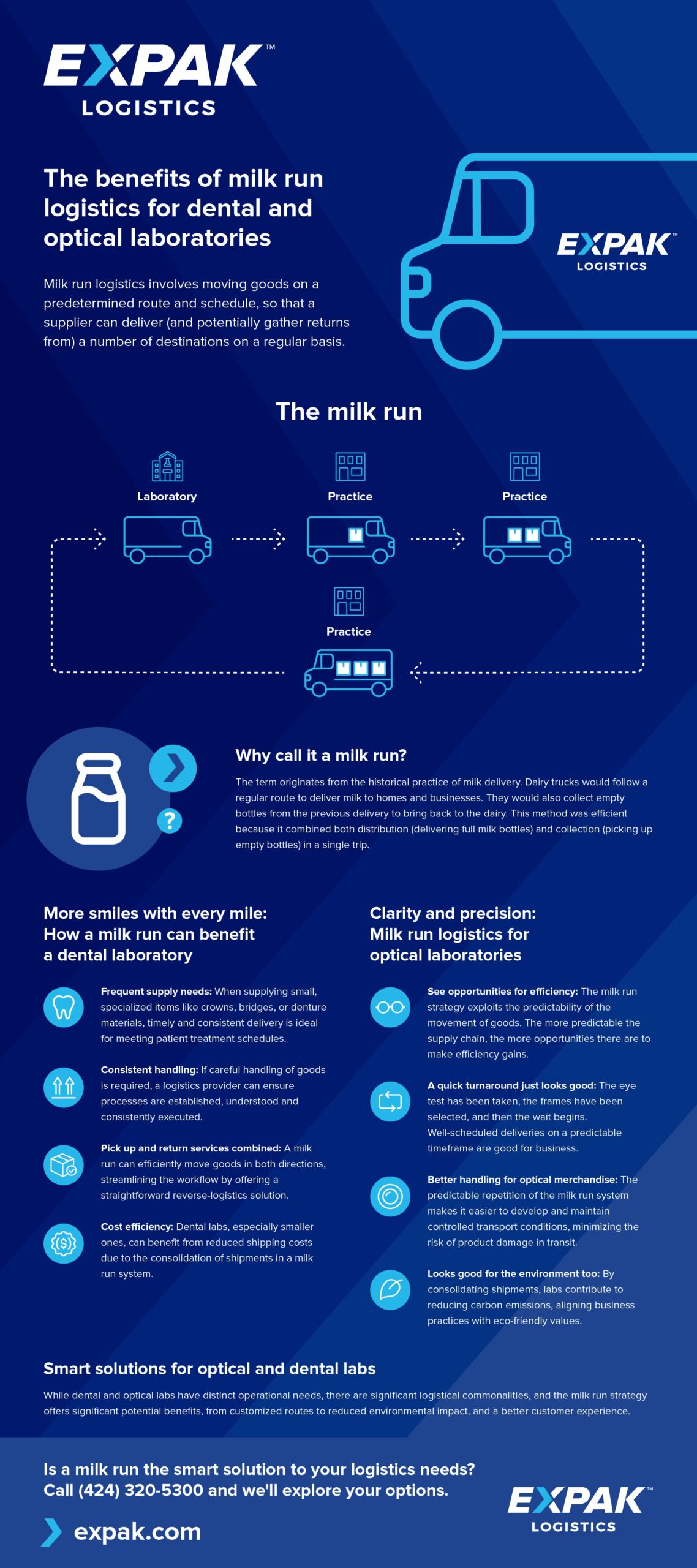Optometry and dentistry offices share a similar workflow, dictated by a combination of patient needs and practice practicalities. Typically, a patient visits the provider for an exam and then schedules a follow-up visit. At a dentist’s office, that return visit may involve having custom-made appliances fitted. At an optometrist, the customer’s return visit typically involves new eyewear.
While some larger optometrist chains may utilize an in-house laboratory, eyewear and dental products are often ordered from an off-premises lab, and transported to the provider’s office when ready. Dental appliances are typically manufactured off-site. In both cases, this consistent distribution cadence between lab and patient practice could lend itself to a “milk run” logistics strategy, with benefits that include greater efficiency and cost savings.
The milk run in logistics: A definition
A “milk run” delivery strategy is named after the traditional method of collecting and delivering milk, a consistent route to deliver and pick up milk bottles. Today, a “milk run” can involve the recurring transportation of any number of goods to a routed series of destinations, as long as the route and cadence make economic sense.
Key features of a milk run delivery strategy
- Regular, scheduled deliveries: Routes and schedules are pre-determined, allowing for consistent and reliable delivery and pickup times.
- Multiple stops: The delivery vehicle stops at several suppliers or customers in one trip, enhancing transport efficiency.
- The ability to manage returns efficiently: The circular nature of a milk run offers a window of opportunity to collect returned goods regularly, as the delivery vehicle can return to the point of origin as its final stop, with returned goods from any location on the milk run, as needed.
- Predictable patterns for reduced costs: With regular deliveries, distribution costs become more predictable, customer expectations can be set, and fewer one-off costs may be incurred.
- Environmental benefits: By consolidating shipments, this strategy reduces the number of trips needed, leading to lower emissions and better fuel efficiency.
Implementing a milk run strategy
There are many factors to consider when exploring a milk run logistics model. A 3PL vendor will be able to provide a POV on the viability of moving to a milk run strategy.
- Logistical complexity: Businesses with multiple, frequent deliveries or pickups from various locations are potential candidates.
- Volume and frequency of shipments: Typically, a consistent flow of small to medium-sized shipments is more suitable for milk runs.
- Geographical considerations: The proximity and routing of suppliers and customers can greatly impact efficiency. Products that require special handling or have short shelf lives might benefit more from this strategy.
- Cost-benefit analysis: Careful consideration of economics is vital to ensure that the operational savings and efficiency gains justify the implementation of the milk run system. This is where the expertise of a 3PL vendor like Expak Logistics can assess your logistics needs and develop the appropriate strategy to address them.


